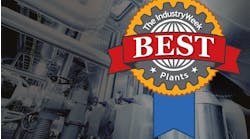A reader asks: “How many hours should we spend 'doing lean'”?
Over my long career of leading large manufacturing and supply chain operations, this question immediately raises my antenna that there may be disconnects with management expectations and the lack of understanding about CI (continuous improvement) in general. Trying to arrive at some arbitrary number of hours to “do lean” suggests that the culture of CI is not in place. It’s just about doing projects and maybe creating a marketing and political story that suggests the entire company is “doing lean."
I’ve been in factories as a consultant where the leadership has put out an edict that “there will be X number of kaizen events per month.” This is an unthinking attempt to create the existence of CI, but it is always a mirage. It also doesn’t take into account the time and effort to do it and, possibly, the loss of some production during that time.
I always wonder how data driven such arbitrary assignments are. I wonder if the projects are really significant enough to warrant whatever technical support is required. I’ll leave further comment on the leadership failures that are pervasive relative to creating CI cultures to another time and try to provide the reader with some concrete things that will help.
At the shop floor level, the question of “how many hours should we spend doing lean” implies, “Gee, I’ve got a bunch of things I need to get done so what’s the minimum time I can spend on CI so I can get back to all the other stuff I have to do.” I hope the reader will clarify if I am wrong, but I’ve been in lots of factories where this is exactly what was going on.
Do you have a question for our lean leadership expert? Ask here!
In spite of the lack of interest at higher levels, grassroots folks can make a difference that not only improves the business but also eliminates hassles on the shop floor. If you’re lucky, this great work will be noticed and begin to spread to other parts of the plant.
Now, to answer the specific question raised by the reader, despite the concerns I’ve just listed, I’m going to provide some advice from a kaizen perspective. First, you need to get some answers to these questions:
- Are you, as the leader of these events, well trained on how to lead a kaizen event? That’s job one.
- What are the richest improvement targets, based on your data analysis, you can identify for process improvement?
- What input have you received from operators? The approach I took throughout my career was to train supervisors/lean champs to always ask machine operators this question: "What are the reasons why you have a bad day?" The thinking is this: if the focus is how to eliminate the reasons why operators have a bad day, lots of good things will happen. Operators will start bringing issues to your attention, shocked but thrilled that you’re listening and willing to help. This is a huge change. Prior to this approach, operators just assumed it’s their job to cope with the process dysfunctions because nobody seemed interested before. It’s a major cultural breakthrough on the shop floor if lower-level leaders are responsive and sustain this kind of behavior.
- Has the list of opportunities been prioritized to steer the selection of which projects will be attacked? (Hint: Always work from the top of the list.)
- Can a supervisor or lean champion lead a small group of hourly associates to accomplish the objective, or will scarce technical resources be required? If scarce resources are required, this is probably not a kaizen event due to the added complexity that requires engineers to be on the team.
- Based on resource requirements, how many kaizen events can you manage at a time? Peel that number of projects off the list as you select the teams to be deployed. As one is completed, take on the next project to perpetuate the positive momentum.
The number of priority projects you can resource and manage, and the time it will take to complete them, will help you calculate “how many hours you should spend doing lean.” Make certain that your immediate supervisor has agreed to the time you require and understands the short-term interruption of production. Make sure your other regular-but-far-less-important responsibilities are suspended or modified to provide the project time you need. Cross train others to pick up the slack on your other duties until your project is completed, including the project follow ups and documentation.
Don’t make the mistake of trying to manage too many projects at once. Remember, there’s about as much work to do post-kaizen, which, unfortunately, is often what doesn’t get done: standard work (SW) documentation doesn’t get updated; retraining of everyone who needs to know about the changes is overlooked; engineering doesn’t get notified; there’s a change in product cost but the plant accountant is not in the loop; et cetera.
Attack Throughput
Suggestion: The best use of kaizen in my experience is to attack how to improve throughput on a constrained work center. Quick changeover (SMED or single-minute exchange of dies) is typically a major opportunity. Keep the scope limited to shorten the time it takes to get better results. This also enables the changes to be accomplished mostly by hourly folks, e.g., operators, maintenance people and the supervisor or lean champion who leads the event.
Reducing cycle times and creating new capacity by moving the constraints help customers get their orders quicker, can result in huge improvements in sales and earnings for the company as well, and reduce the cash required to carry inventory. Another bonus is that capital spending for more capacity can be deferred into future years, while the capacity you create by debottlenecking is free capacity!
In summary, this approach describes the opportunities for a win-win-win without being dependent on naïve or disinterested leaders up the line to lead the charge. Just make sure your supervisor is fully supportive and has your back. It’s the opportunity to eliminate the hassles for the operators and supervisors by using kaizen to create capacity, improve processes and achieve better results. It’s so much more gratifying work. You get to the point you’ll work this way all the time because it’s a team effort, it’s personally rewarding and much less stressful.
If you’re as fortunate as I was back in the late 1980s, you can start a grass fire of interest around the shop floor and on up the line based on results. One of these days the improvements will get leadership's attention and curiosity about “What’s going on down there in Jackson? Their results are outstanding, and I’d like to know what’s changed. Let’s go see the operation, talk to the shop floor people and the leadership group, and find out how we can put legs on this into other parts of the business.”
We’d rather start CI from the top down, but I’ve experienced starting from the bottom up by leading the charge and I’ve experienced leading the charge of CI from the top down until it became the new corporate culture. Trust me. CI gets a lot easier when it’s led from the top.
On prioritizing and focus:
“You will never reach your destination if you stop and throw stones at every dog that barks.” -- Winston Churchill
Larry Fast answers your questions in the IndustryWeek feature Ask the Expert: Lean Leadership. Fast is founder and president of Pathways to Manufacturing Excellence and a veteran of 35 years in the wire and cable industry. He is the author of The 12 Principles of Manufacturing Excellence, A Lean Leader's Guide to Achieving and Sustaining Excellence, 2nd. Edition.




